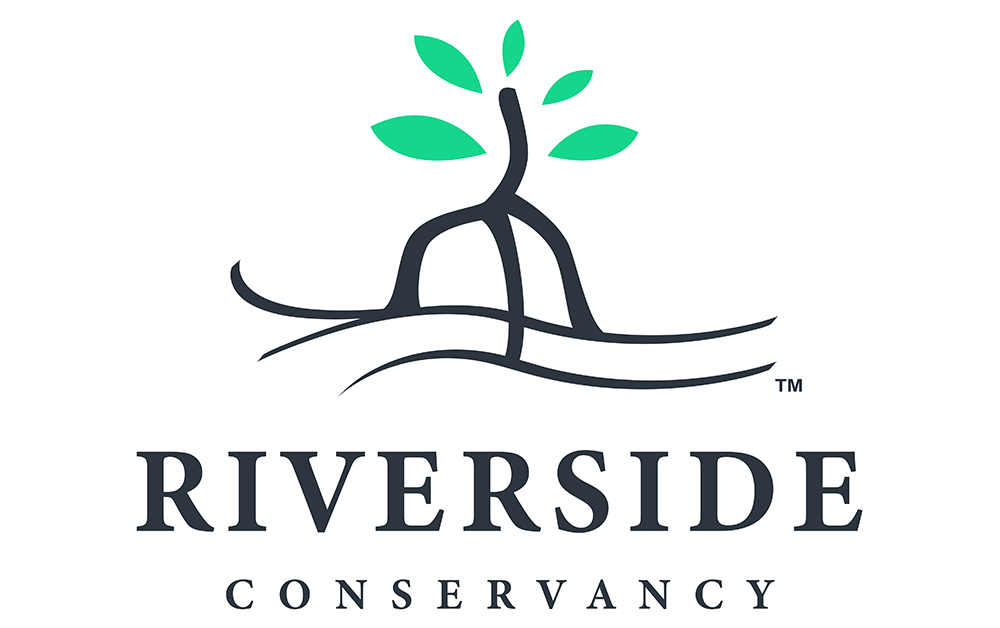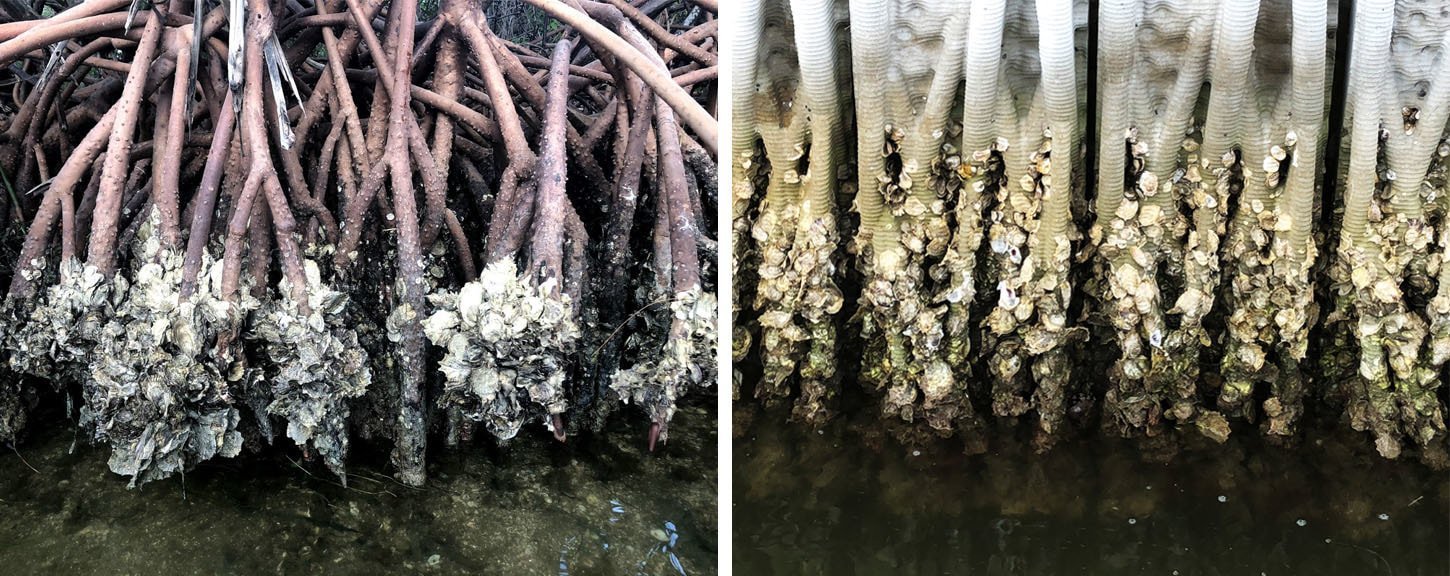By Lisa D. Mickey
Tidal habitats throughout Florida have been lost to development to meet the demand of the state’s ever-rising population.
That result is not only a loss of natural spatial area, but also the loss of historic habitat and breeding grounds for many species, as well as the loss of associated ecosystem benefits.
That got Dr. Keith Van de Riet thinking.
An associate professor of architecture at the University of Kansas, Van de Riet had spent prior years on the water conducting research at Florida Atlantic University (FAU) in Boca Raton, Fla. His focus had been on collaborative development of coastal structures to promote ecological services alongside urban development.
Van de Riet partnered with FAU biologist and then-doctoral candidate Jessene Aquino-Thomas to design Mangrove Reef Walls as an alternative to conventional sea walls. She provided feedback on his design from a biological perspective.
A molded image of red mangrove prop roots built into his reef-wall panels provided not only a more natural aesthetic to a conventional sea wall, but offered a more suitable surface around which aquatic life could thrive.
“We’ve lost tidal habitats to a staggering degree with up to 90 percent in some areas of Florida converting a natural edge to a constructed one,” said Van de Riet. “We’ve replaced natural shorelines with seemingly endless miles of seawall and dock structures that provide very little habitat and value to ecosystems.”
Van de Riet cited urban runoff pollution “coupled with a reduction in filter feeders,” such as oysters and clams, as a cause for “major problems throughout the water column,” reaching all the way down to seagrass and corals. In 2021 alone, more than 1,100 manatees died of starvation in the Indian River Lagoon as a direct result of seagrass loss.
“I believe we need to rethink the kinds of construction being implemented, [as well as] the material[s], to positively impact the environment and support biodiversity of the planet,” he added.
Van de Riet studied built ecologies in graduate school – a term he says indicates how builders can impact ecological systems, either negatively or positively. In his studies on South Florida shorelines, he observed the difference between healthy natural shorelines and those altered by human development.
Obviously, full living shorelines offer the optimal environment, but when that is not possible in developed areas, Van de Riet sought to create a reef wall panel product that would integrate “habitat on the constructed edge, without eliminating the desired waterfront access that is critical to Florida’s economy.”
His company uses a what it describes as a “unique blend of high-strength concrete and crushed oyster shell” in a product created to accelerate shellfish growth and “ensure longevity.” The product may be used on new or existing seawalls and may be custom designed for specific waterways.
Van de Riet believes his Mangrove Reef Walls offer a panel construction designed to: “add visual and functional value to seawalls;” create vertical habitat surfaces that fit within the sectional profile of most Florida canals; offer a wall surface that avoids resting on the sea floor, thereby disrupting natural habitat; help dissipate shoreline wave energy; help minimize invasive species growth; and provide places for fish and shellfish to hide around constructed shorelines.
So far, the Reef Walls have been installed on Lemon Bay at a small resort in Englewood, Fla., as well as at a private residence in Fort Pierce, Fla. A project on the Miami River is currently in the permitting phase.
Van de Riet says the substrate productivity of his product depends on the site’s water quality, rate of tidal exchange and existing presence of filter feeders, such as oysters. The increased surface area on which oysters may recruit is beneficial and has, in some cases, “exploded in numbers across the panels.”
The textured and molded panels of the Reef Walls, rather than just the flat surface found in traditional sea walls, also mimics the multi-dimensional surfaces present in the natural environment.
“There’s no silver bullet to fix our environmental problems, so I recognize that our panels may be just one piece of an approach that requires other technologies, shifts in policy and community awareness,” said Van de Riet.
“That said, the Mangrove Reef Wall panels can contribute habitat for numerous species and increase oyster reefs to beneficially impact water quality,” he added. “My hope for this product is to positively influence Florida communities by improving the environment and inspiring change.”
The Riverside Conservancy, a nonprofit conservation organization based in Edgewater, Fla., believes that Mangrove Reef Walls are a great option for improving aquatic habitat where sea walls currently exist. The Conservancy is hosting Dr. Van de Riet and his architecture students this week.
Together with local university students, the group is creating and installing reef wall prototypes that will showcase their effectiveness in the Indian River Lagoon. Kelli McGee, the Conservancy’s Executive Director, describes these panels as another tool in the toolbox for restoring living shorelines.
“Mangrove Reef Walls use biomimicry to imitate the surface area of red mangrove roots,” said McGee. “This gives oysters more places to grow and it reduces harsh wave energy.”
“When an incoming wave hits a conventional sea wall, the wave energy travels down, scouring and eroding the sand and shoreline, before rebounding back out,” added McGee. “Mangrove Reef Walls and other oyster-friendly technologies such as Oyster Reef Breaks, serve as wave breaks in addition to habitat enhancers.”
Many organizations in Florida are testing out new ways to restore aquatic habitat, improve water quality, and protect upland properties from storm surge and erosion.
“It’s exciting to see local businesses, nonprofits, government agencies, and universities work in entrepreneurial ways to benefit the Indian River Lagoon, said McGee. “Each prototype could become a profitable business and each student we train could create successful businesses that help the environment.”
Whether planting shoreline mangroves, enhancing oyster reefs, or retrofitting existing seawalls with Mangrove Reef Walls, Riverside Conservancy and its partners hope to create a supply chain for habitat restoration.
For more information, visit: www.reefwall.com.




